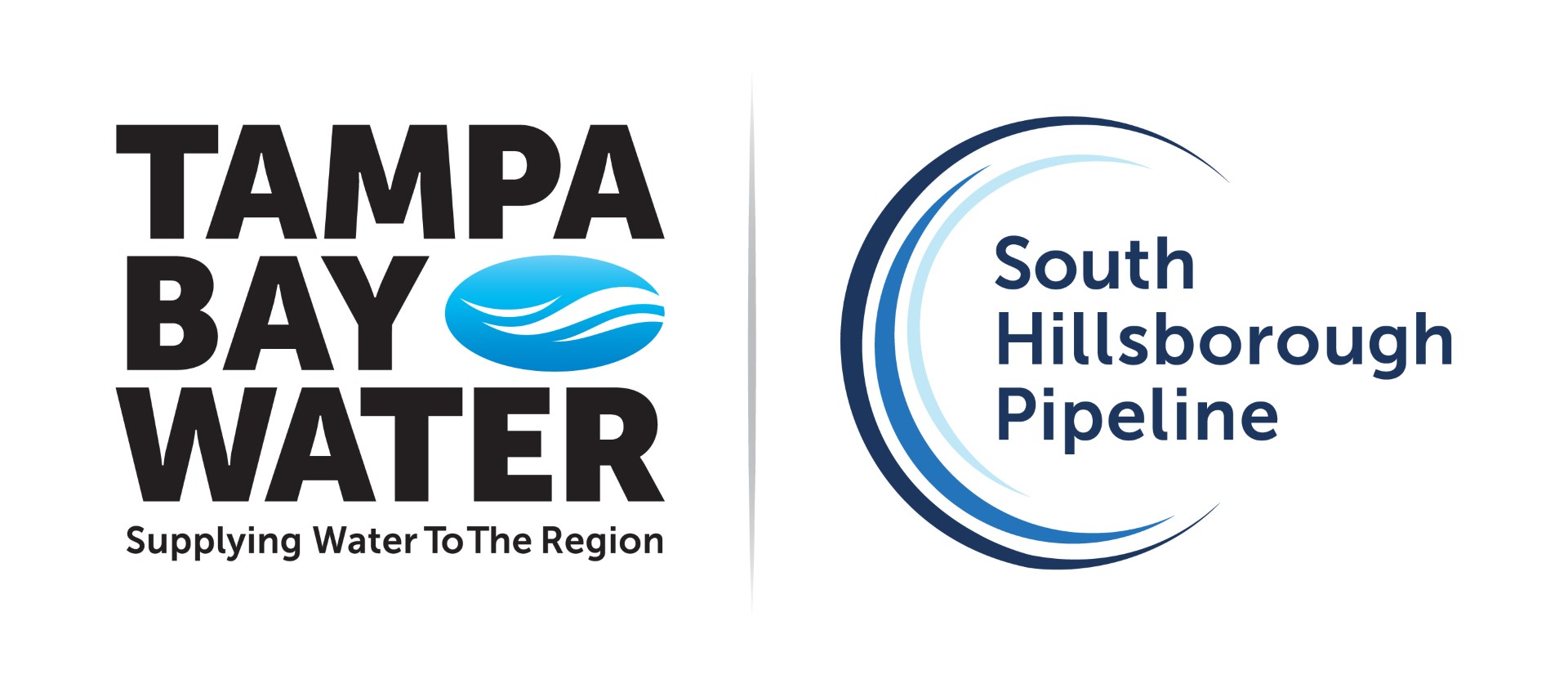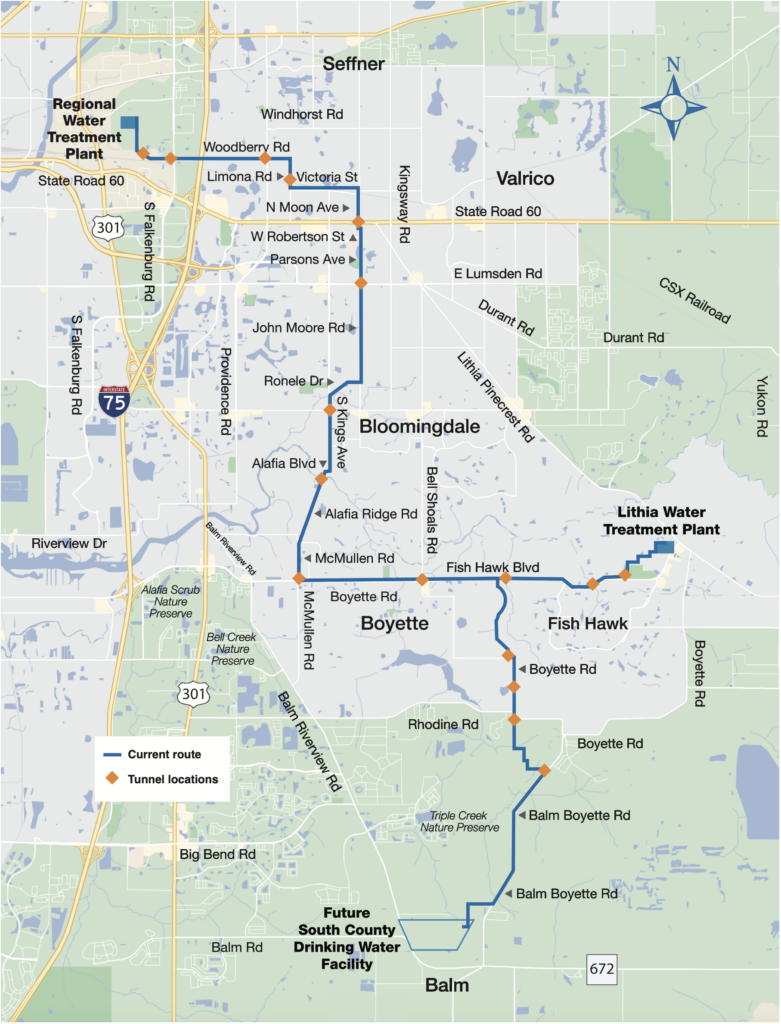Overview
Southern Hillsborough County is experiencing unprecedented population growth that is driving the demand for additional drinking water. By 2045, the number of homes in the Boyette area is expected to grow by one-third, the number in Wimauma is expected to more than double, and the number in the Balm area is expected to nearly triple. To meet the long-term needs of this area, Tampa Bay Water is building the South Hillsborough Pipeline.
The new South Hillsborough Pipeline will be 3-5 feet in diameter and carry up to an additional 65 million gallons per day (mgd) of water to Hillsborough County’s southern service area when complete in 2028. The pipeline will start at the Tampa Bay Regional Surface Water Treatment Plant in Brandon, connect to Hillsborough County’s Lithia Water Treatment Plant and end at the County’s new connection point at Balm Riverview and Balm roads. The pipeline provides redundancy between the Tampa Bay Regional Surface Water Treatment Plant in Brandon and Hillsborough County’s Lithia Water Treatment Plant.
Tampa Bay Water’s engineering consultants analyzed a total of 10 routes (five northern segments and five southern segments), which resulted in a shortlist of three top-ranked consolidated routes. The routes were evaluated against 11 selection criteria, which included non-cost factors such as public inconvenience, safety, environmental impacts and permitting, as well as project cost.
Tampa Bay Water’s consulting engineers are currently completing the detailed design for the pipeline.
The vast majority of property easements needed for the project have been identified and property owners for those easements have been notified. It is possible that the project team may need a few additional temporary construction easements in the future, but those needs have not yet been identified. If and when that is determined, property owners will be contacted by either certified U.S. mail or telephone.
Segment A
Segment A exits the Tampa Bay Water’s Regional Facilities Site, crosses Falkenburg Road at Woodberry Road and heads east past Providence Road to Limona Road, where it heads south. At Victoria Street, the route turns east, then turns south at North Moon Avenue. The route then turns east at Robertson Street West and continues south on Parsons Avenue, past Lumsden Road, and continues south on John Moore Road turning west on Ronele Drive and then south at South Kings Avenue. The route turns west onto Alafia Boulevard and crosses the Alafia River at 4142 Alafia Boulevard. After going under the river, the route continues south along 7202 Alafia Ridge Road and then on Alafia Ridge Loop to south on McMullen Road. At Boyette Road, the route goes east, continuing to Fishhawk Boulevard to the Lithia Water Treatment Plant.
Segment B
Segment B connects to Segment A near Fish Hawk Boulevard, just west of Fish Hawk Creek. It heads south to Boyette Road, then intersects Balm Boyette Road and continues south to Hillsborough County’s new connection point at the intersection of Balm and Balm Riverview roads. Segment B will be funded by Hillsborough County but will be owned and operated by Tampa Bay Water.
Construction
There are portions of this route where trenchless construction techniques (such as microtunneling) are intended to be used to reduce or avoid impacts to environmentally sensitive areas. Final design will include an in-depth evaluation of protected species (flora and fauna) to determine if these are located within the proposed construction limits and if necessary, how to mitigate impacts.
Tampa Bay Water has selected Garney Construction as the Construction Manager At-Risk (CMAR) to provide preconstruction services and manage construction of the pipeline. The CMAR delivery method was selected for this project to help reduce the risk for project schedule delays for this critical infrastructure. This is possible due to having the flexibility to initiate early procurement of materials, which is a significant benefit based on the current supply chain issues. Additionally, the CMAR would have the ability to move forward with some key early construction packages as appropriate.

